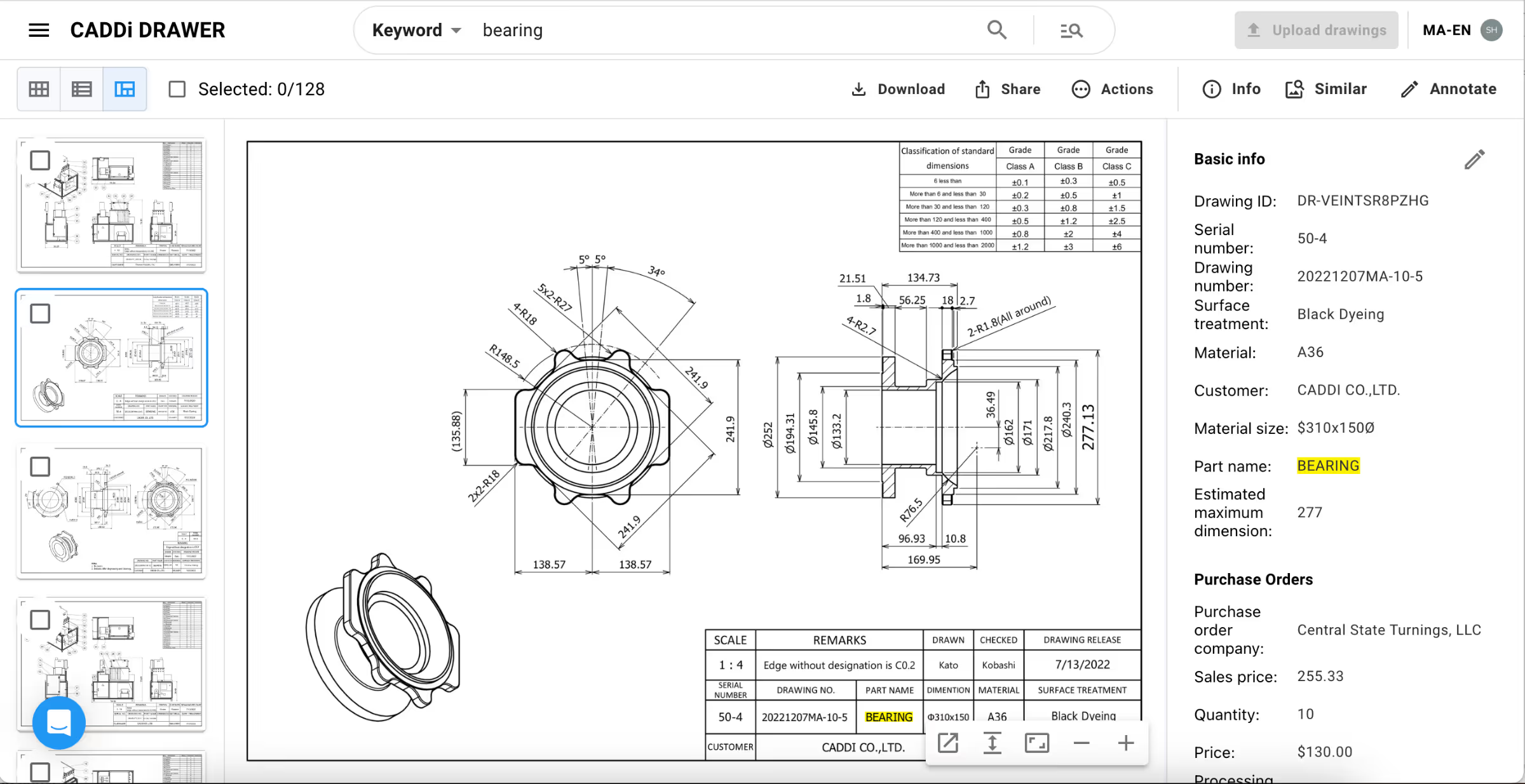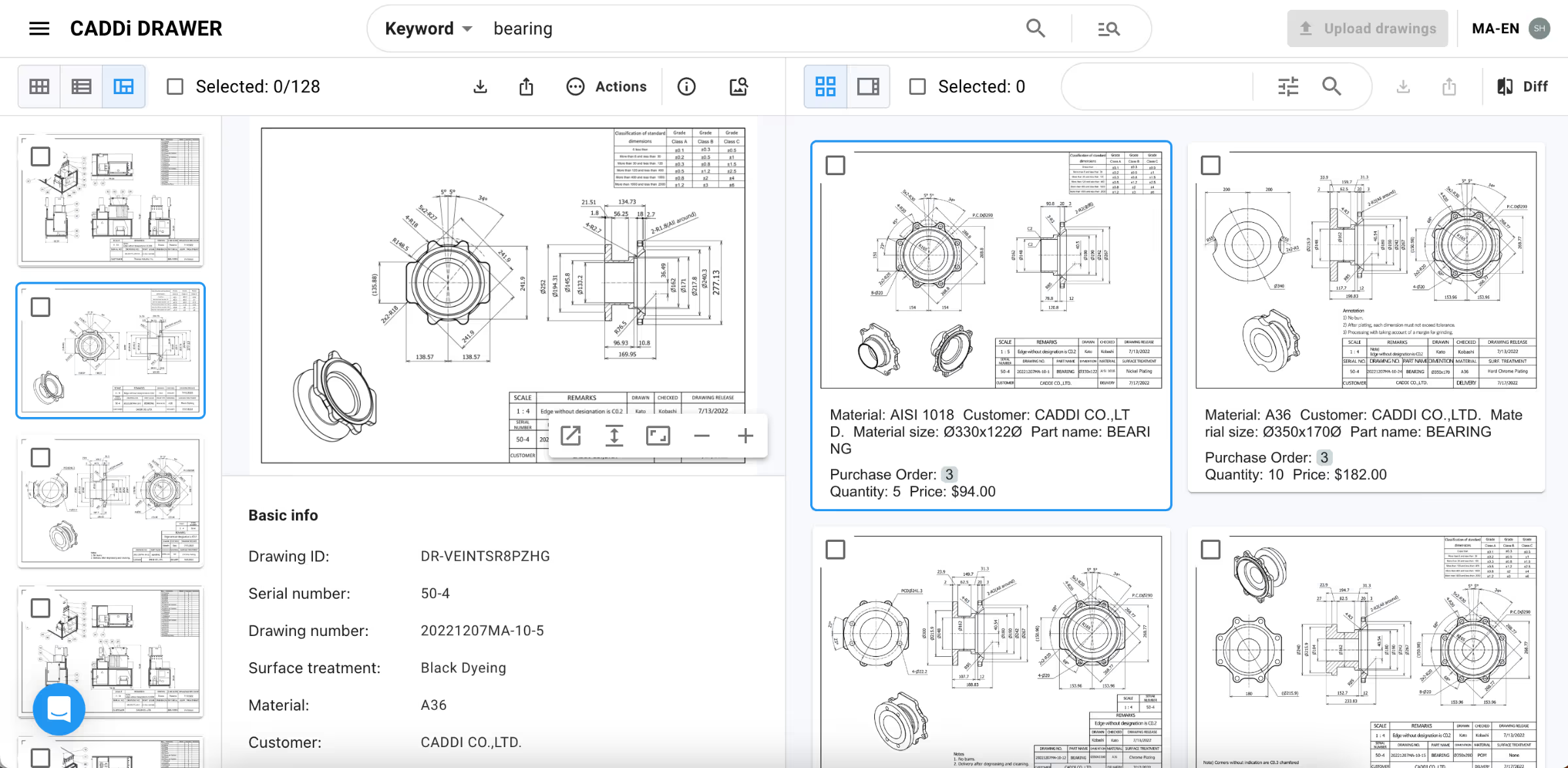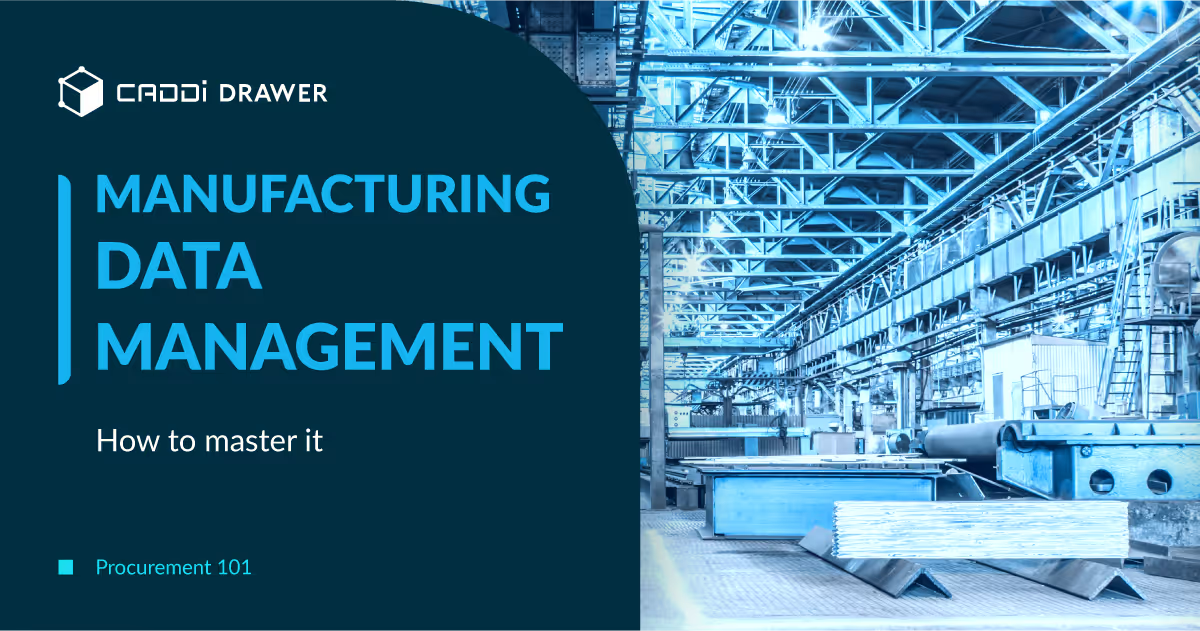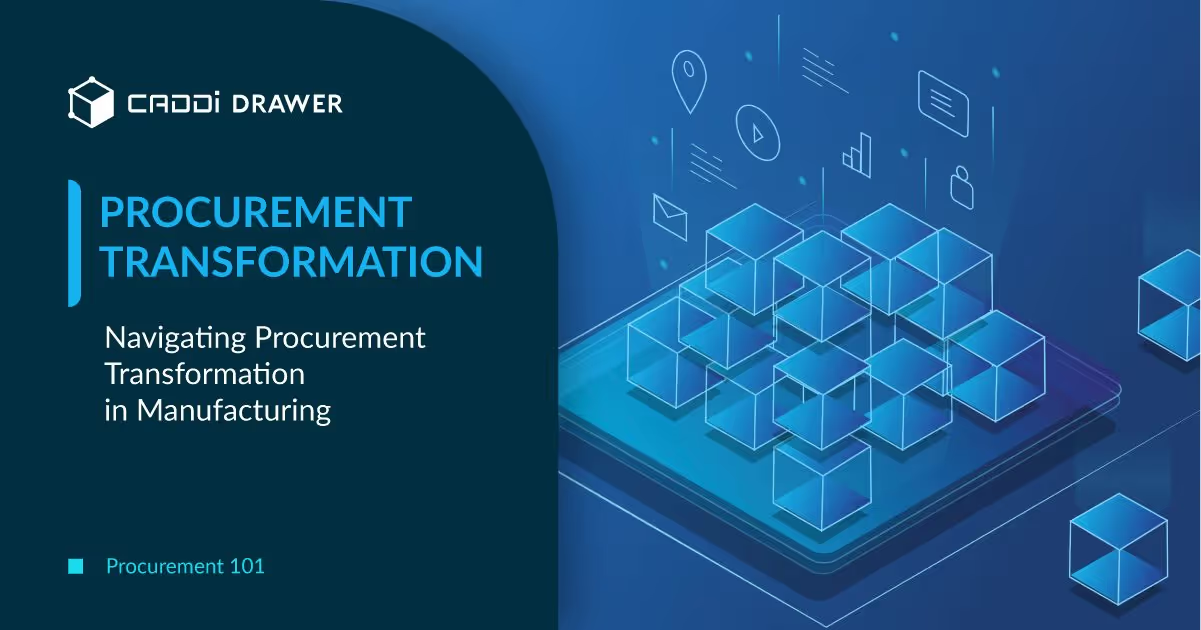Procurement 101: Unlocking Savings and Efficiency with Should-Cost Analysis

Table of Contents

Introduction
In the fast-paced and competitive landscape of the manufacturing industry, procurement managers are at the forefront of strategizing for cost efficiency and securing a competitive edge. One pivotal strategy that has gained prominence is Should-Cost Analysis (SCA)—a comprehensive methodology that enables businesses to dissect and understand the true cost of their products and services.
Through a meticulous examination of expenses related to manufacturing, materials, labor, and overhead, SCA lays the groundwork for informed negotiation and strategic decision-making, ensuring procurement managers can leverage data to optimize costs and enhance supplier relationships.
The Benefits of Should Cost Analysis
SCA transcends traditional cost-cutting, focusing instead on achieving cost optimization and delivering multifaceted benefits. For procurement managers, the application of SCA is transformative, offering direct cost savings, enhanced supplier negotiations, and greater budget accuracy. This methodological approach fosters a proactive stance towards cost management, enabling more transparent and data-driven dialogues with suppliers. By aligning cost management strategies with SCA principles, procurement managers can unlock significant value, not just in terms of reduced expenses but also by enhancing the overall value chain’s efficiency and productivity.
Comprehensive Guide to Performing Should-Cost Analysis
The execution of Should-Cost Analysis involves several critical steps that ensure a thorough and effective evaluation:
1. Define the scope of analysis
Start by defining the focus on selecting specific categories of products or components for your analysis. It’s essential to employ the Pareto Principle (20:80 rule) to identify the areas where investing your time and resources will yield the most significant benefits.

2. Deep Dive into Cost Drivers:
To gain a comprehensive understanding of cost structure, assessing material costs, labor expenses, overheads, and even geographical impacts is essential. However, creating accurate should-cost models is highly challenging due to the complexity of factors such as varying labor costs, material prices, and fluctuations in supplier quotation skills. In this context, leveraging your internal data assets becomes the most reliable source for developing a should-cost model that accurately reflects your company’s unique situation.
In this situation, enhancing procurement data integration and visualization is a critical step. Begin by incorporating a wide range of data, including historical quotations, supplier information, and records of design modifications. Additionally, integrate order data stored in ERP/MRP systems. This comprehensive approach to data integration lays the foundation for a robust analysis and visualization framework, enabling more informed decision-making and strategic planning in procurement processes.
.avif)
3. Market Data Utilization:
Employ industry reports and market trends to grasp the broader cost implications and benchmarks. Utilize online platforms such as MetalMiner, Fast Markets, or Bloomberg for up-to-date metal price information and market analysis.This step is crucial for ensuring your analysis is grounded in the current market reality.
4. Cost modeling
Cost modeling is a process used to estimate the costs associated with producing a product or delivering a service. It involves analyzing various cost factors, including materials, labor, overheads, and any other expenses, to predict the total cost. Mckinsey provides a useful framework of cost modeling breaking the cost gap between quoted cost and theoretical cost into three major classifications: does-cost, should-cost, and could-cost.
In this step, segment your costs into detailed categories including material cost, processing cost, programming cost, etc..Use both traditional and advanced tools to predict and validate your findings. This granular approach allows for pinpointing specific areas where efficiencies can be realized or negotiations can be targeted.
Benefit and limitations of AI-Powered Cost Prediction
Incorporating digital technologies and AI into each step of the SCA can significantly enhance the accuracy and efficiency of your analysis. Platforms that offer real-time data and predictive analytics can transform how costs are managed, allowing for dynamic adjustments to procurement strategies based on current market conditions.
However, AI models that claim to price based on data science and algorithms face significant challenges due to the difficulty of accurately predicting human behavior, which often deviates from logical patterns. The effectiveness of such AI models is further compromised by the limited interaction and data available from vendors. Therefore, you should bear in mind that these tools only assist and enrich your work but won’t be able to fully automate or replace your current tasks.
Strategic Sourcing and Supplier Engagement
As a result, SCA enables a more strategic approach to sourcing and supplier engagement. By understanding the cost breakdown of products and services, procurement managers can identify key areas for negotiation and collaboration, leading to more mutually beneficial supplier relationships. This strategic insight allows for the development of partnerships that are based on transparency and shared goals, ultimately leading to more sustainable and resilient supply chains. Check out Procurement 101: Strategic Sourcing – Optimizing supply chain for sustainable outcomes for more details into strategic sourcing.
Conclusion: Embracing the Future of Procurement with SCA
Should-Cost Analysis is more than a procurement tool; it’s a strategic imperative for modern procurement managers aiming to navigate the complexities of today’s manufacturing sector. By embracing SCA, enhanced with the latest digital solutions and AI technologies, procurement professionals can unlock unprecedented levels of savings, efficiency, and strategic value. The future of procurement is data-driven, strategic, and innovative, with SCA at its core.
How CADDi Drawer Can Help
CADDi Drawer revolutionizes the Should-Cost Analysis process with its cutting-edge technology and data-driven capabilities, fundamentally transforming how procurement departments approach supplier selection, negotiation, and pricing strategies.
The following describes how CADDi Drawer can support the resolution of such challenges.
Procurement & Engineering data integration and visualization
Imagine being able to access a comprehensive history of pricing and supplier performance with just a few clicks, ensuring that your analysis is based on informed, data-driven insights. CADDi Drawer enables users to leverage various supply chain data assets, such as CAD drawings, BOMs, purchase costs, spec sheets, and defect reports, with its data linking and visualization capabilities.

Should costing based on “actual” data
CADDi Drawer scrutinizes historical pricing data for drawings akin to those under consideration, assisting procurement teams in setting a realistic target price for their bids. By clarifying the typically obscure process of price setting, this functionality provides procurement managers with a reliable benchmark rooted in actual past data, rendering should cost analyses more accurate and implementable.

Enhancing Negotiations with Data
CADDi Drawer offers in-depth insights into procurement performance and detailed cost breakdowns for comparable drawings, facilitating negotiations that are based on facts and logic. This level of transparency allows for discussions grounded in a mutual understanding of the involved costs and value, fostering better negotiation outcomes and strengthening supplier partnerships.
Introduction
In the fast-paced and competitive landscape of the manufacturing industry, procurement managers are at the forefront of strategizing for cost efficiency and securing a competitive edge. One pivotal strategy that has gained prominence is Should-Cost Analysis (SCA)—a comprehensive methodology that enables businesses to dissect and understand the true cost of their products and services.
Through a meticulous examination of expenses related to manufacturing, materials, labor, and overhead, SCA lays the groundwork for informed negotiation and strategic decision-making, ensuring procurement managers can leverage data to optimize costs and enhance supplier relationships.
The Benefits of Should Cost Analysis
SCA transcends traditional cost-cutting, focusing instead on achieving cost optimization and delivering multifaceted benefits. For procurement managers, the application of SCA is transformative, offering direct cost savings, enhanced supplier negotiations, and greater budget accuracy. This methodological approach fosters a proactive stance towards cost management, enabling more transparent and data-driven dialogues with suppliers. By aligning cost management strategies with SCA principles, procurement managers can unlock significant value, not just in terms of reduced expenses but also by enhancing the overall value chain’s efficiency and productivity.
Comprehensive Guide to Performing Should-Cost Analysis
The execution of Should-Cost Analysis involves several critical steps that ensure a thorough and effective evaluation:
1. Define the scope of analysis
Start by defining the focus on selecting specific categories of products or components for your analysis. It’s essential to employ the Pareto Principle (20:80 rule) to identify the areas where investing your time and resources will yield the most significant benefits.

2. Deep Dive into Cost Drivers:
To gain a comprehensive understanding of cost structure, assessing material costs, labor expenses, overheads, and even geographical impacts is essential. However, creating accurate should-cost models is highly challenging due to the complexity of factors such as varying labor costs, material prices, and fluctuations in supplier quotation skills. In this context, leveraging your internal data assets becomes the most reliable source for developing a should-cost model that accurately reflects your company’s unique situation.
In this situation, enhancing procurement data integration and visualization is a critical step. Begin by incorporating a wide range of data, including historical quotations, supplier information, and records of design modifications. Additionally, integrate order data stored in ERP/MRP systems. This comprehensive approach to data integration lays the foundation for a robust analysis and visualization framework, enabling more informed decision-making and strategic planning in procurement processes.
.avif)
3. Market Data Utilization:
Employ industry reports and market trends to grasp the broader cost implications and benchmarks. Utilize online platforms such as MetalMiner, Fast Markets, or Bloomberg for up-to-date metal price information and market analysis.This step is crucial for ensuring your analysis is grounded in the current market reality.
4. Cost modeling
Cost modeling is a process used to estimate the costs associated with producing a product or delivering a service. It involves analyzing various cost factors, including materials, labor, overheads, and any other expenses, to predict the total cost. Mckinsey provides a useful framework of cost modeling breaking the cost gap between quoted cost and theoretical cost into three major classifications: does-cost, should-cost, and could-cost.
In this step, segment your costs into detailed categories including material cost, processing cost, programming cost, etc..Use both traditional and advanced tools to predict and validate your findings. This granular approach allows for pinpointing specific areas where efficiencies can be realized or negotiations can be targeted.
Benefit and limitations of AI-Powered Cost Prediction
Incorporating digital technologies and AI into each step of the SCA can significantly enhance the accuracy and efficiency of your analysis. Platforms that offer real-time data and predictive analytics can transform how costs are managed, allowing for dynamic adjustments to procurement strategies based on current market conditions.
However, AI models that claim to price based on data science and algorithms face significant challenges due to the difficulty of accurately predicting human behavior, which often deviates from logical patterns. The effectiveness of such AI models is further compromised by the limited interaction and data available from vendors. Therefore, you should bear in mind that these tools only assist and enrich your work but won’t be able to fully automate or replace your current tasks.
Strategic Sourcing and Supplier Engagement
As a result, SCA enables a more strategic approach to sourcing and supplier engagement. By understanding the cost breakdown of products and services, procurement managers can identify key areas for negotiation and collaboration, leading to more mutually beneficial supplier relationships. This strategic insight allows for the development of partnerships that are based on transparency and shared goals, ultimately leading to more sustainable and resilient supply chains. Check out Procurement 101: Strategic Sourcing – Optimizing supply chain for sustainable outcomes for more details into strategic sourcing.
Conclusion: Embracing the Future of Procurement with SCA
Should-Cost Analysis is more than a procurement tool; it’s a strategic imperative for modern procurement managers aiming to navigate the complexities of today’s manufacturing sector. By embracing SCA, enhanced with the latest digital solutions and AI technologies, procurement professionals can unlock unprecedented levels of savings, efficiency, and strategic value. The future of procurement is data-driven, strategic, and innovative, with SCA at its core.
How CADDi Drawer Can Help
CADDi Drawer revolutionizes the Should-Cost Analysis process with its cutting-edge technology and data-driven capabilities, fundamentally transforming how procurement departments approach supplier selection, negotiation, and pricing strategies.
The following describes how CADDi Drawer can support the resolution of such challenges.
Procurement & Engineering data integration and visualization
Imagine being able to access a comprehensive history of pricing and supplier performance with just a few clicks, ensuring that your analysis is based on informed, data-driven insights. CADDi Drawer enables users to leverage various supply chain data assets, such as CAD drawings, BOMs, purchase costs, spec sheets, and defect reports, with its data linking and visualization capabilities.

Should costing based on “actual” data
CADDi Drawer scrutinizes historical pricing data for drawings akin to those under consideration, assisting procurement teams in setting a realistic target price for their bids. By clarifying the typically obscure process of price setting, this functionality provides procurement managers with a reliable benchmark rooted in actual past data, rendering should cost analyses more accurate and implementable.

Enhancing Negotiations with Data
CADDi Drawer offers in-depth insights into procurement performance and detailed cost breakdowns for comparable drawings, facilitating negotiations that are based on facts and logic. This level of transparency allows for discussions grounded in a mutual understanding of the involved costs and value, fostering better negotiation outcomes and strengthening supplier partnerships.
Ready to see CADDi Drawer in action? Get a personalized demo.
Subscribe to our Blog!
Related Resources












.svg)



.svg)
.svg)
.svg)


